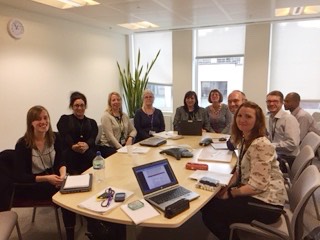Digital services
A blog post from Fiona Rutherford, which discusses the implementation of remote working, specifically virtual hearings. Fiona talks about the opportunities (and responsibility) presented by the ‘once in a generation’ £1 billion investment in our courts and tribunals. This work will re-shape how we enable access to the justice system and how we deliver our …
A blog post from Kevin Gallagher, Head of the Digital Change Directorate who was one of the judges for the Online Courts Hackathon event co-hosted by the Society for Computers and Law, Legal Geek, the Judiciary of England and Wales and HM Courts and Tribunals Service.
A blog post from Paul Downer, Service Manager at HMCTS with responsibility for delivering a new online probate service. Paul discusses how we will transform the probate service to introduce a new online application form for personal applicants and solicitors.
A blog post from Clare Galloway, Service Manager for the Civil Money Claims project. Claire provides an update on how we are developing a new digital service for lower value money claims which will provide a simple process for individuals and businesses to resolve disputes. This service will use a mix of technology, conciliation and …
A blog post from Mike Logan who works in the HM Courts and Tribunals’ Development Directorate. Mike shares an update on the implementation of the Single Justice Procedure, which is the means by which work is processed within the Single Justice Service.
A blog post from Adam Lennon, Divorce Service Manager at HMCTS. Adam talks about how we are working with stakeholders to develop and an online divorce service and shares details of a workshop with legal practitioners that demonstrated the latest version of the online divorce service called ‘Apply for a divorce’.
A blog post from Leanne Galbraith detailing results from Criminal Justice System Common Platform Programme research sessions for defence practitioners held at Liverpool QEII Law Courts on 25 January 2017. The sessions tested the designs of the hearing result screens and hearing events.
A blog post from Fiona Rutherford that explains the role of her HMCTS Business Strategy and Design Team and how they are responsible for helping to shape how our justice system will look and operate in the future.
A post from Leanne Galbraith from when she chaired the National Digital Practitioners’ Working Group on 24 November 2016. Leanne explains that at the meeting Rhiannon Evans from Supporting Justice was a guest speaker on behalf of Citizen’s Advice. Rhiannon kindly volunteered to attend to support their campaign to improve the experience of defence and …
A blog post from Jo Nowakowska from HMCTS's new Customer Directorate. Jo explains how she is currently implementing an online complaints channel (Resolver) for HMCTS. Not only will this make it easier for our customers to submit a complaint but we’ll also be able to respond more effectively and deliver improvements to our customer services.








